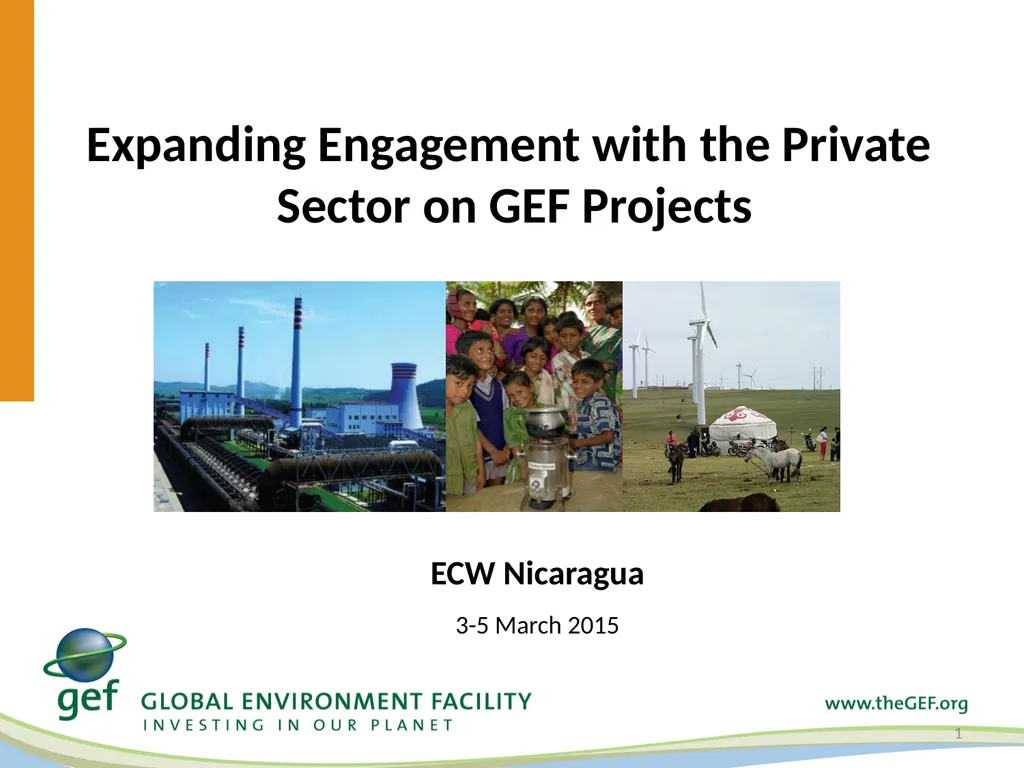
Expanding Engagement with the Private Sector on
Author: cheryl-pisano | Published: 2025-06-27
Description: Expanding Engagement with the Private Sector on GEF Projects 1 ECW Nicaragua 3-5 March 2015 Expanding Private Sector Engagement Private sector engagement is not new; but GEF projects can deliver more by partnering on sustainable business
Download Presentation
Download the PPT/PDF: Download
Transcript:
Loading transcript…